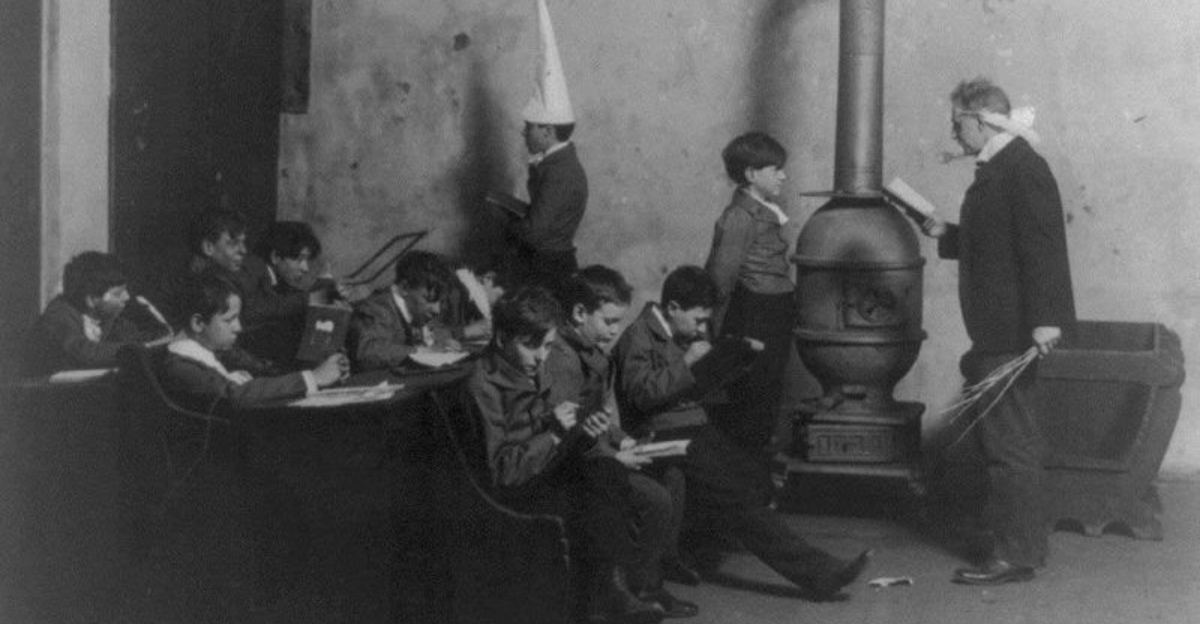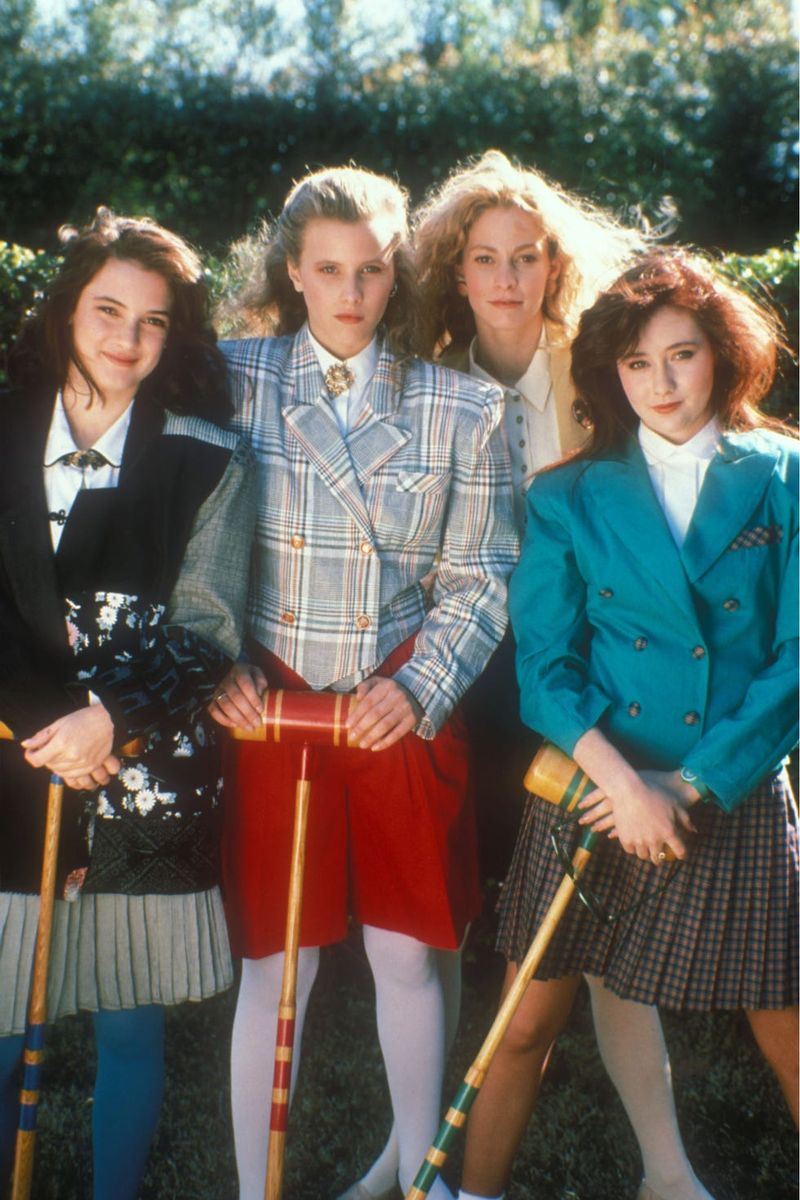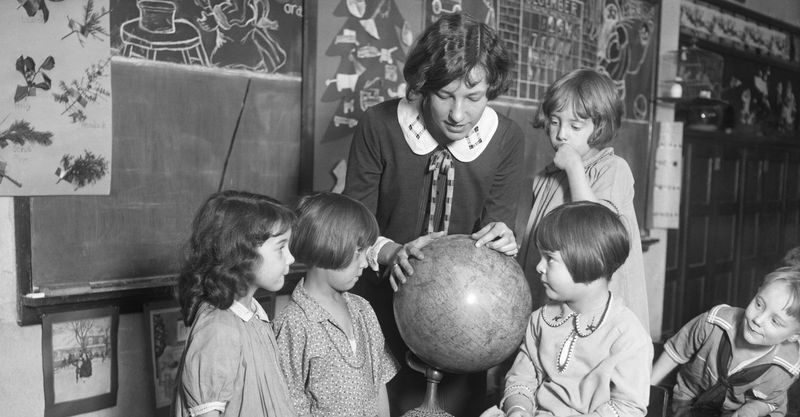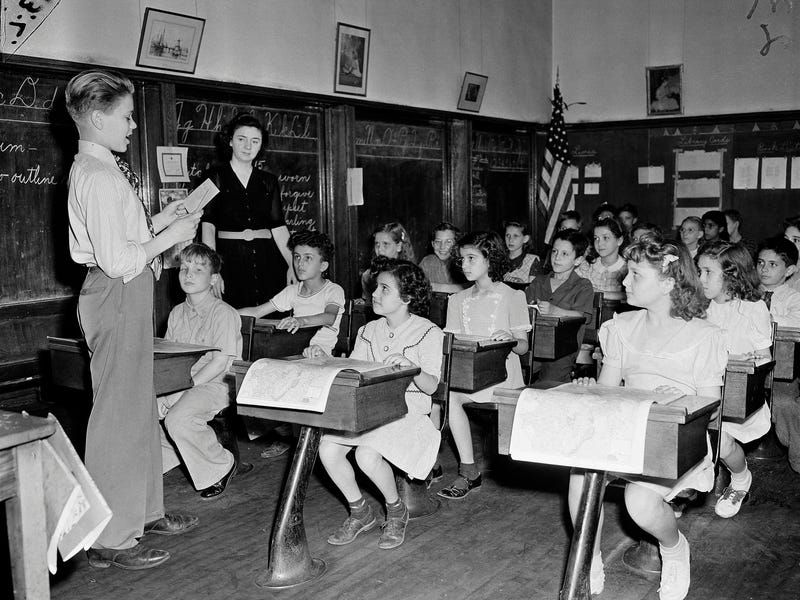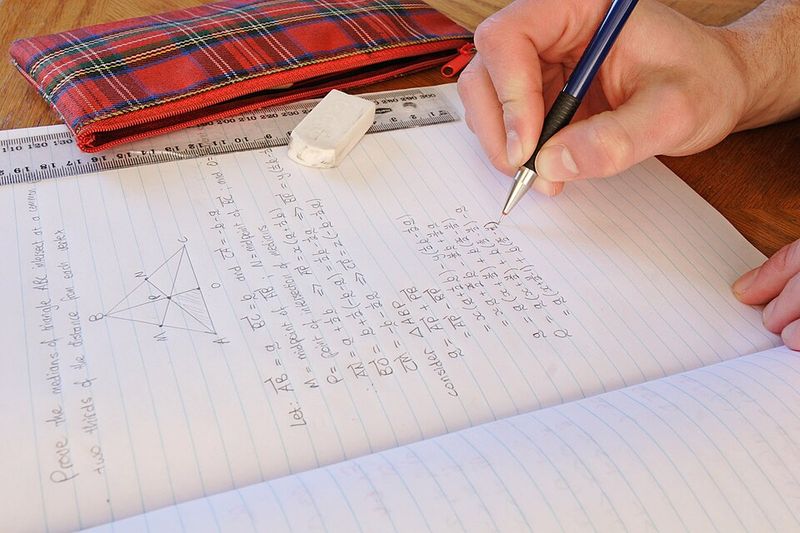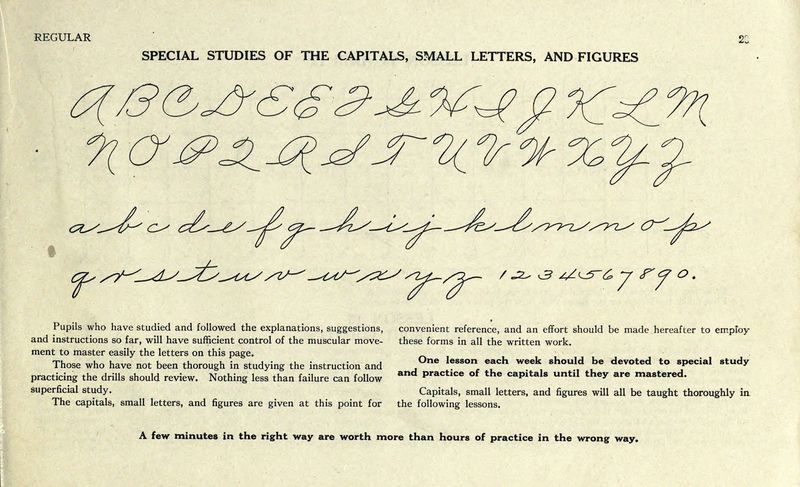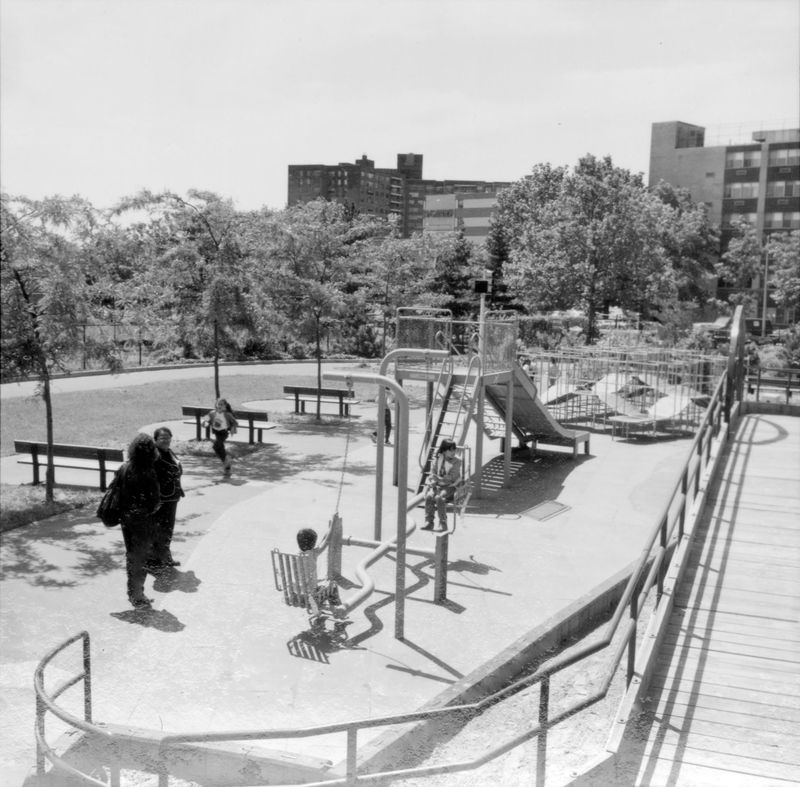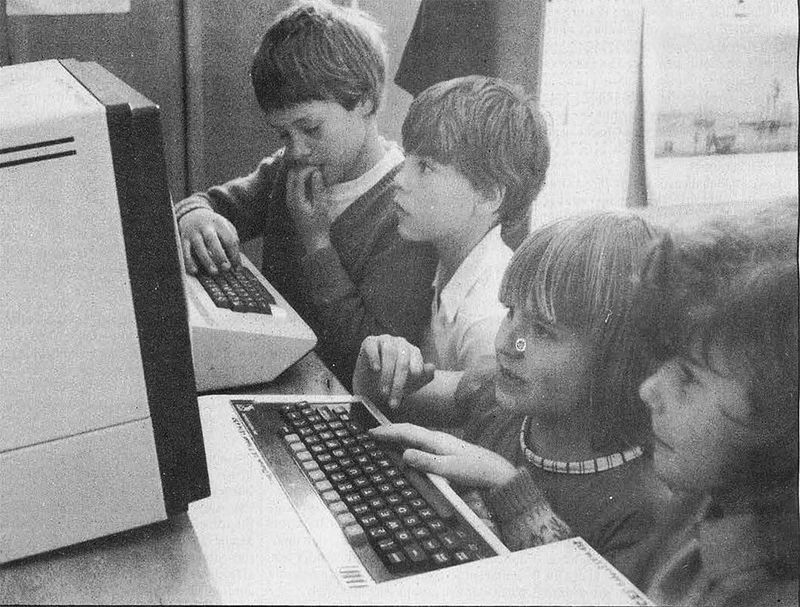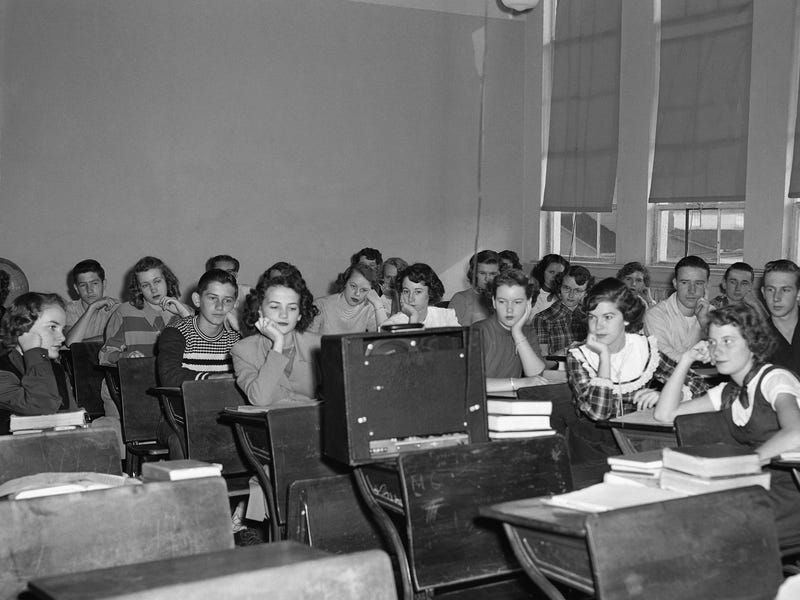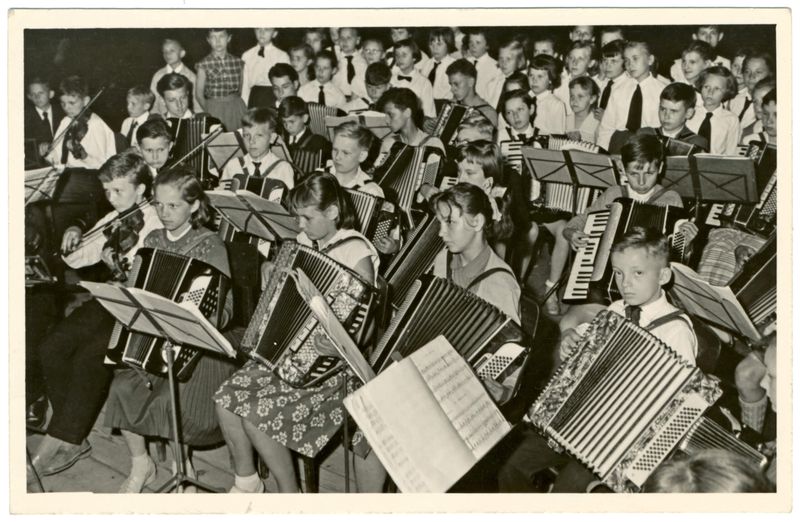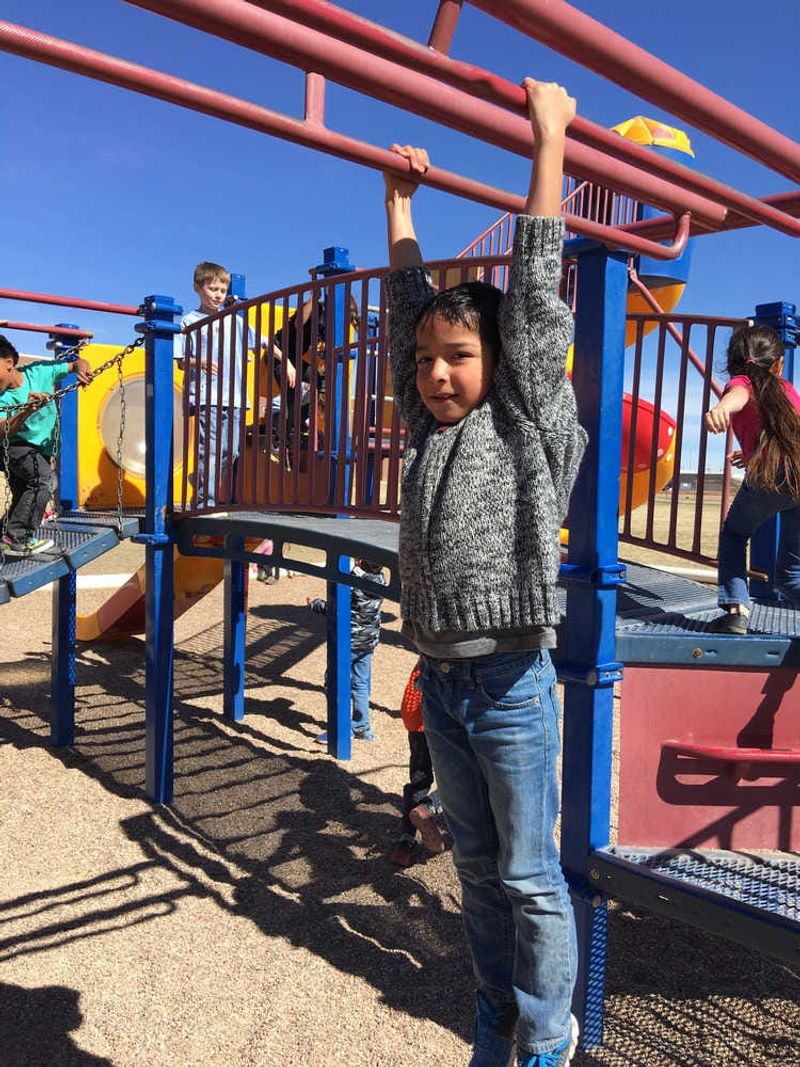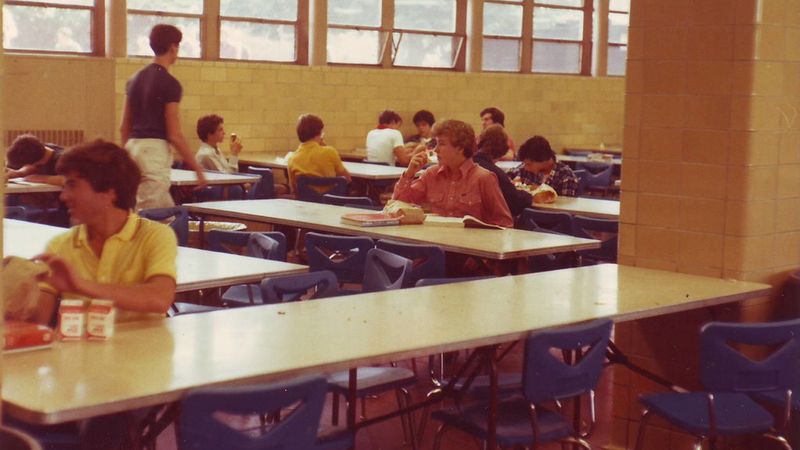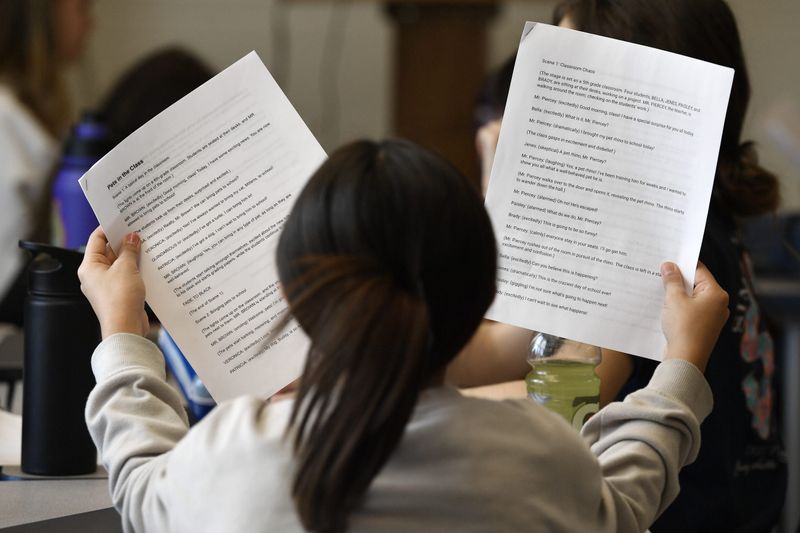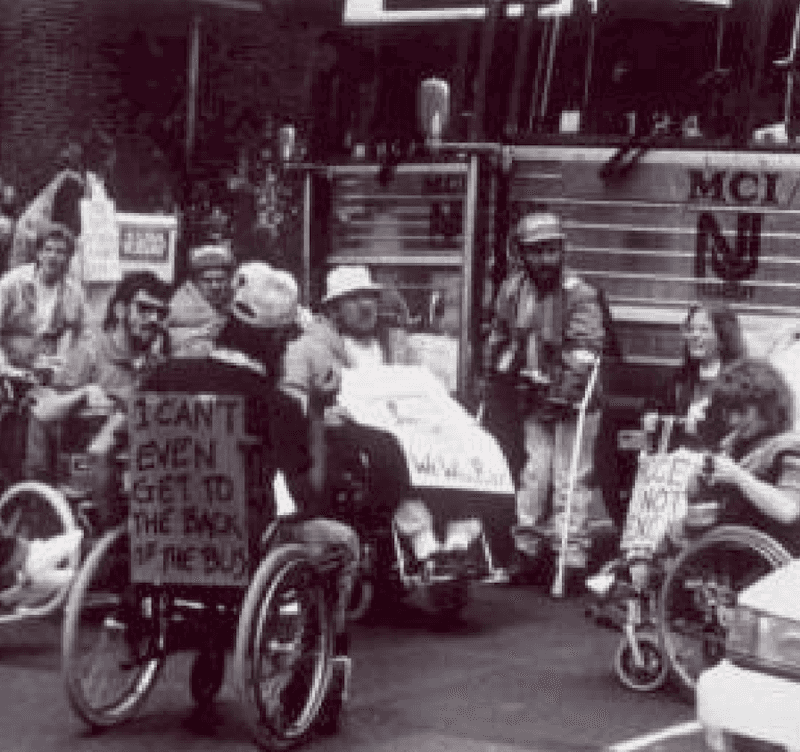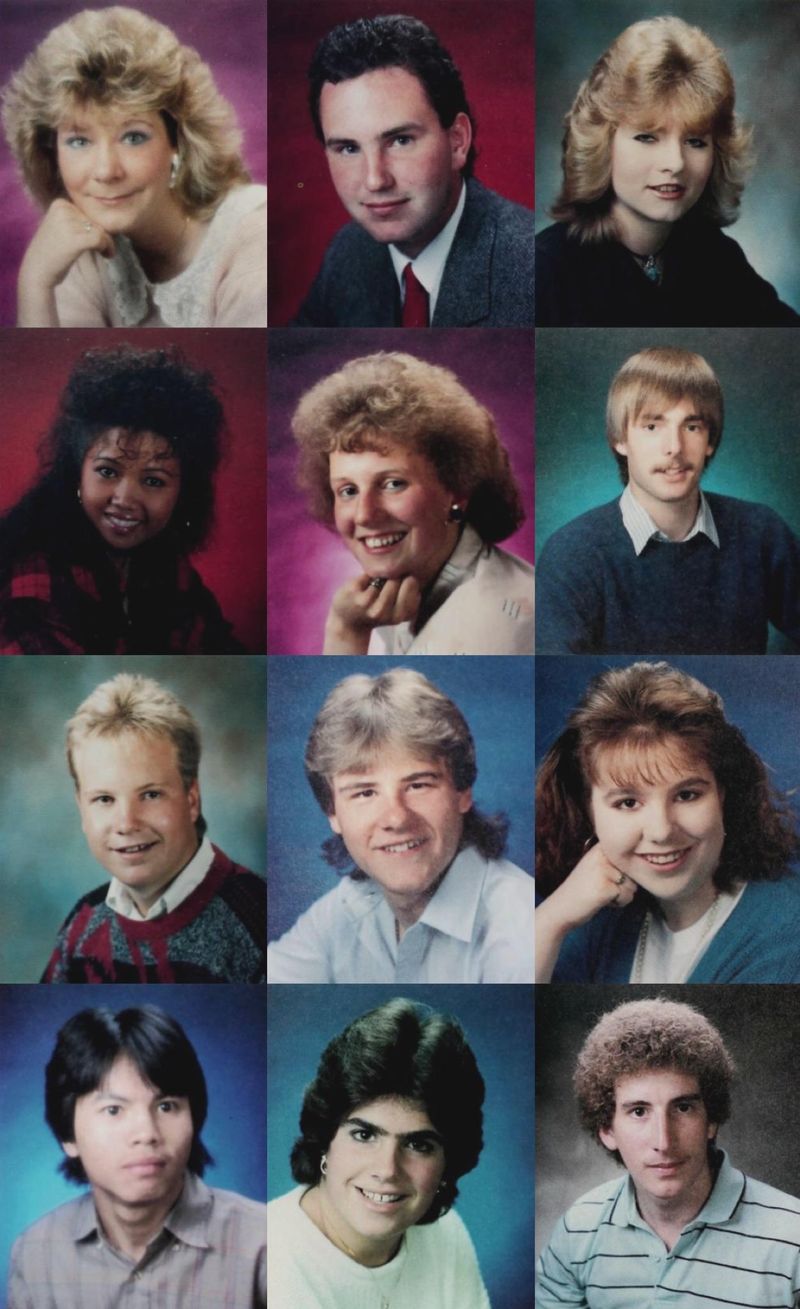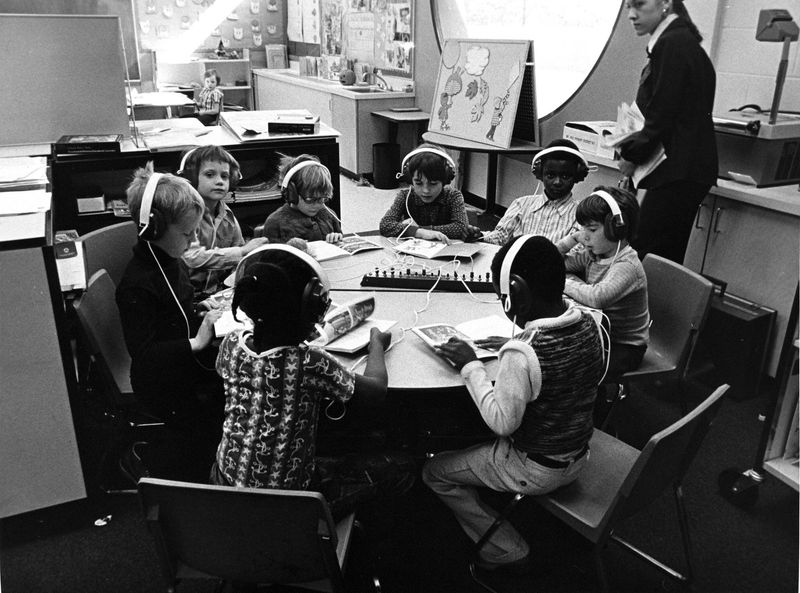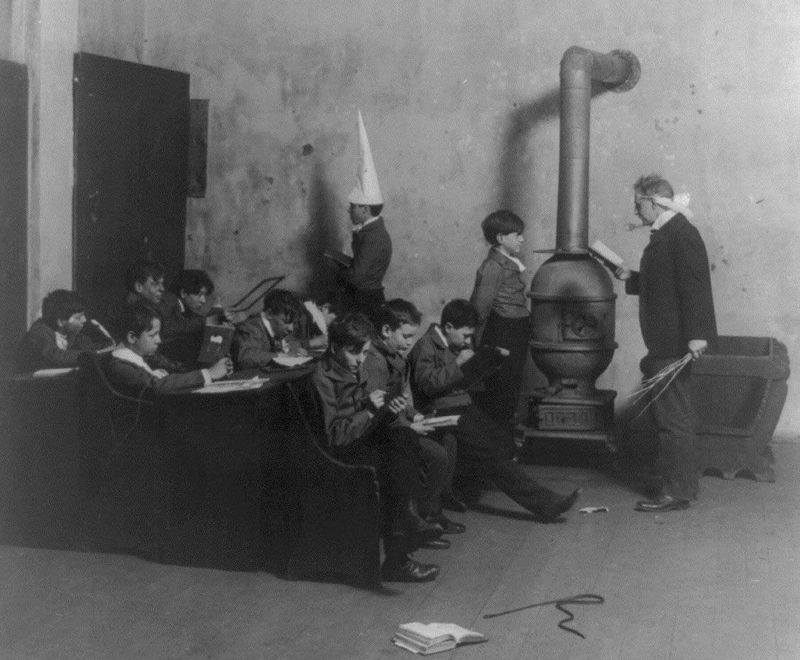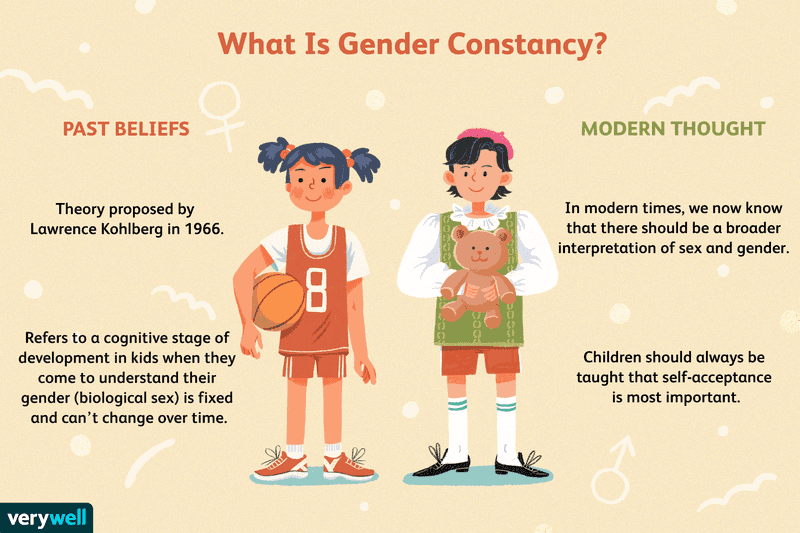The ’80s were a time of big hair, neon colors, and some truly head-scratching school rules. Many of these regulations, once considered normal, would raise more than a few eyebrows today and could even get teachers into hot water. From rigid dress codes to questionable disciplinary techniques, let’s take a trip down memory lane and explore 20 outdated school rules that have rightfully been left behind.
1. Corporal Punishment
Schools in the ’80s often employed corporal punishment as a means to maintain discipline. Teachers would use paddles, rulers, or even their hands to keep students in line.
The swish of the wooden paddle was a familiar sound in many schools, striking fear into students’ hearts.
Today, however, this practice is largely viewed as abusive and detrimental to a child’s development. Modern educational philosophies emphasize positive reinforcement and understanding, rather than fear and physical punishment. Thankfully, corporal punishment has been banned in most educational institutions.
2. Strict Dress Codes
Dress codes in the ’80s were often rigid and uncompromising. Boys were expected to wear ties, while girls donned dresses or skirts of a certain length.
Hair had to be neat, and any deviation from the norm could result in detention or worse. These strict guidelines stifled personal expression and individuality.
Today, schools encourage a more relaxed approach, allowing students to express their personality through their attire. While some dress codes remain, they are generally more inclusive and considerate of personal style and cultural differences.
3. Single-Gender Classes
In many schools, classes were often segregated by gender, with subjects like home economics for girls and shop class for boys. This separation reinforced traditional gender roles, limiting opportunities and creating stereotypes.
Such practices seemed normal at the time but are now recognized as promoting inequality.
Today, co-educational classrooms encourage collaboration and equal opportunities, allowing students to pursue interests without gender bias. This change has been crucial in fostering an environment of inclusiveness and equality.
4. No Talking Policy
Silence was often the rule of the day, with strict “no talking” policies enforced during class and sometimes even during lunch.
Students found themselves whispering in fear of being caught, as the expectation was to listen without question.
Nowadays, open communication and collaborative learning are encouraged, with schools recognizing the value of conversation and engagement in the learning process. These skills are essential for critical thinking and creativity, reflecting a significant shift from past practices.
5. Homework As Punishment
Using homework as a form of punishment was a common practice in the ’80s. If students misbehaved, extra assignments would be given as a form of discipline.
This method didn’t foster a love for learning; instead, it created resentment and stress, often leading to burnout and disengagement.
Today, educational approaches focus on making learning enjoyable and meaningful, rather than punitive. Assignments are designed to reinforce what is taught, not as a tool for control.
6. No Left-Handed Writing
In the 1980s, left-handed students were often forced to write with their right hand, as left-handedness was seen as unusual or incorrect.
Teachers would spend extra time trying to “correct” this natural trait, leading to frustration and confusion among students.
Thankfully, such practices have been abandoned, recognizing that handedness is a personal trait, not a flaw. Today, schools embrace individuality and diversity, supporting all students in their natural abilities.
7. Segregated Playgrounds
Playgrounds in the 1980s often had areas designated specifically for boys and girls, reflecting societal norms of the time.
This segregation limited interaction and reinforced gender stereotypes, even during play.
Modern playgrounds encourage inclusivity and interaction among all children, fostering friendships and mutual understanding, regardless of gender. This evolution highlights a broader acceptance of diversity and equality in social settings.
8. Minimal Technology Use
Technology was a rare commodity in ’80s classrooms. Lessons were taught using chalkboards, overhead projectors, and textbooks, with little to no digital resources.
The lack of technology limited students’ exposure to emerging fields like computer science.
Today, technology is integral to education, providing access to limitless information and innovative learning tools. This shift has made education more engaging and relevant to the modern world.
9. Teacher-Centered Classrooms
In the ’80s, classrooms were often teacher-centered, with instructors delivering lectures while students quietly took notes.
This approach placed the teacher as the sole source of knowledge, limiting student interaction and engagement.
Modern education embraces student-centered learning, promoting collaboration, discussion, and active participation. This shift encourages critical thinking and empowers students to take ownership of their education.
10. Limited Extracurricular Activities
Extracurricular activities in the ’80s were often limited to traditional sports and clubs, with few opportunities for artistic or cultural exploration.
Students with interests outside the mainstream found few outlets to express themselves, missing out on personal growth and development.
Today, schools offer a diverse range of activities, from robotics to theater, catering to varied interests and talents. This broadened scope allows students to explore passions and develop essential life skills.
11. Recess as a Reward
Recess was often used as a bargaining chip in the ’80s, given only as a reward for good behavior or academic performance.
Children who struggled were sometimes denied this crucial break, affecting their social and physical development.
Today, recess is seen as an essential part of the school day, promoting physical health, social skills, and mental well-being.
12. Silent Lunchrooms
Lunchrooms were often silent zones in the ’80s, with strict rules against talking or socializing during meals.
This silence was thought to maintain order but instead stifled social interaction and relaxation.
Modern lunchrooms encourage conversation and camaraderie, recognizing the importance of social engagement in a student’s overall development. This change reflects a focus on nurturing well-rounded individuals.
13. Rote Memorization Focus
Education in the ’80s often emphasized rote memorization, with students expected to memorize facts and figures without understanding the underlying concepts.
This approach limited critical thinking and creativity, focusing on test scores rather than real learning.
Today, education emphasizes understanding, analysis, and application, encouraging students to think deeply and critically about subjects. This shift has led to a more meaningful and engaging educational experience.
14. Exclusion of Students with Disabilities
Students with disabilities were often excluded from mainstream classrooms in the ’80s, with little to no accommodations or support.
This exclusion limited their opportunities and perpetuated inequality in education.
Modern schools prioritize inclusion, providing resources and support to ensure all students have equal access to education and opportunities for success.
15. No Personal Technology Allowed
Personal technology like Walkmans, electronic games, and calculators were often banned in classrooms during the ’80s, seen as distractions rather than tools.
Students caught with these devices faced strict penalties, as they were thought to disrupt learning.
Today, personal technology is embraced as a learning aid, with devices like tablets and smartphones enhancing educational experiences. This shift acknowledges the potential of technology to enrich learning.
16. Teacher Enforced Hair Rules
Hair length and style were often regulated by school rules, with teachers enforcing strict guidelines.
Boys with long hair or girls with unconventional styles could face disciplinary action, reflecting societal norms of the time.
Today, personal appearance is largely respected, with schools acknowledging individual expression and cultural significance. This change highlights a move towards inclusivity and respect for personal choices.
17. Limited Parental Involvement
Parental involvement in the ’80s was often limited to occasional meetings or report cards, with little collaboration between teachers and parents.
This lack of communication sometimes hindered students’ progress and development.
Modern education encourages active parental involvement, recognizing the positive impact of family engagement on a child’s learning and success. This collaboration fosters a supportive and cohesive educational environment.
18. Punishment Without Explanation
Discipline in the ’80s often involved punishment without explanation, leaving students confused about their wrongdoing.
Teachers rarely took the time to discuss behavior or provide insight, reinforcing authority without understanding.
Today’s educators focus on communication and understanding, explaining the reasons for discipline and encouraging positive behavior. This approach helps students learn from mistakes and promotes a respectful and supportive learning environment.
19. Gender-Specific Academic Expectations
Academic expectations in the ’80s were often gender-specific, with boys encouraged towards math and science while girls were steered towards the arts and humanities.
This bias limited opportunities, reinforcing stereotypes and hindering potential.
Modern education strives for equality, encouraging all students to explore interests freely, regardless of gender. This inclusive approach fosters a more balanced and unbiased educational experience.
